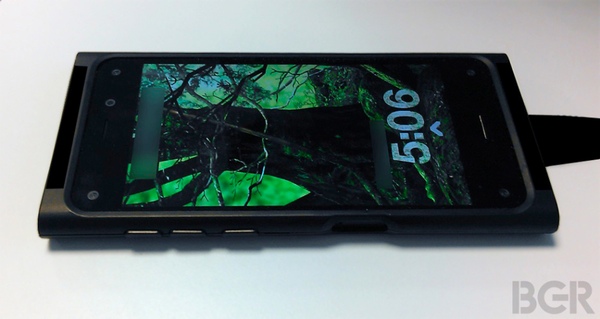Amazon’s upcoming smartphone will have a unique, gesture-based interaction method that involves tilting the phone to access new information and control on-screen elements, including flipping between pages, according to a new BGR report. This illuminates much more clearly some suggestions about head movements leading to some gesture-based features mentioned in previous reports about Amazon’s smartphone ambitions, including third-party integration possibilities.
The gesture control features would allow users to tilt their phones to see labels on icons in certain apps, as in tilting up while browsing the Amazon video store to reveal IMDB ratings under movie titles. Similarly, Yelp ratings would appear over restaurant listings on a map when a user tilts a device down. Tilting the phone left or right in Amazon’s own store app might page through product images, and tilting in the Kindle app could open the X-Ray feature, displaying more information about contextual details like plot, setting and characters.
Other features detailed in the report including tilting while using the messaging app to access the phone’s camera roll for easy attachments, and tilting in the weather app to access the extended menu. You can also scroll with tilt in the Kindle and web browser app, the report claims.
That’s an awful lot of tilting, if this is all true, and that means a lot of wrist and hand movement that smartphone users aren’t going to be accustomed to. The phone seems to replace a lot of the functions associated with the home button on iPhone, or the persistent software keys on Android with gestures instead, and that’s a very risky paradigm shift. Already, Amazon appears to be taking a big risk by betting that users will be wowed by 3D-head tracking for slightly 3D visual effects in the interface itself, with sort of an advanced take on iOS 7’s parallax effect (itself not overwhelmingly popular). If it’s also looking to replace the usual virtual button and swipe-based interfaces with physical device tilts (which also sounds like it could be hard on the eyes?) then this could be a very unusual smartphone launch over all.
Amazon taking big risks with a smartphone would be very different from its hardware strategy so far, which has mainly involved seeking cost advantage (Kindle Fire) or iterating very slightly on successful products already in the market (Fire TV). So far, everything’s still just rumor, but the cumulative body of information coming from different sources does seem to point to a singular approach. Kudos for originality, but we’ll see if this thing’s unique bits really end up being all that useful in practice.
